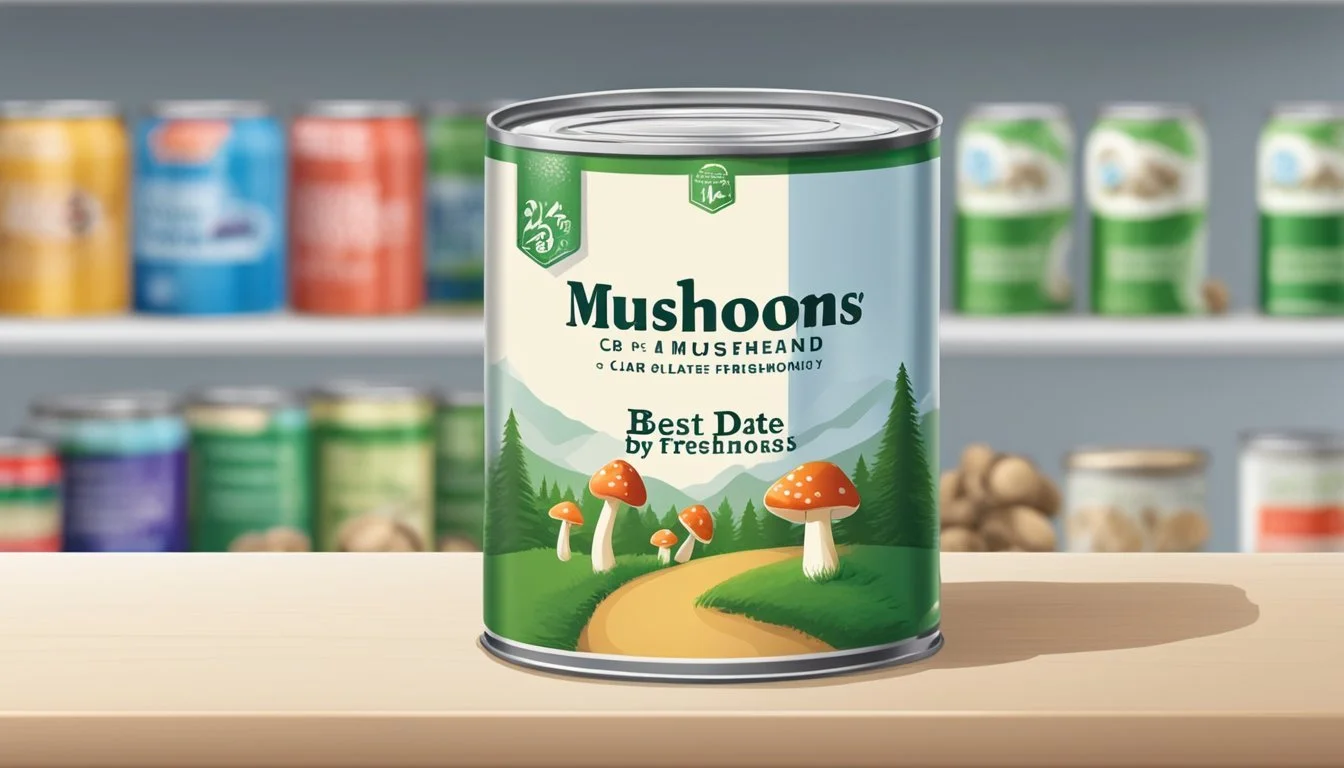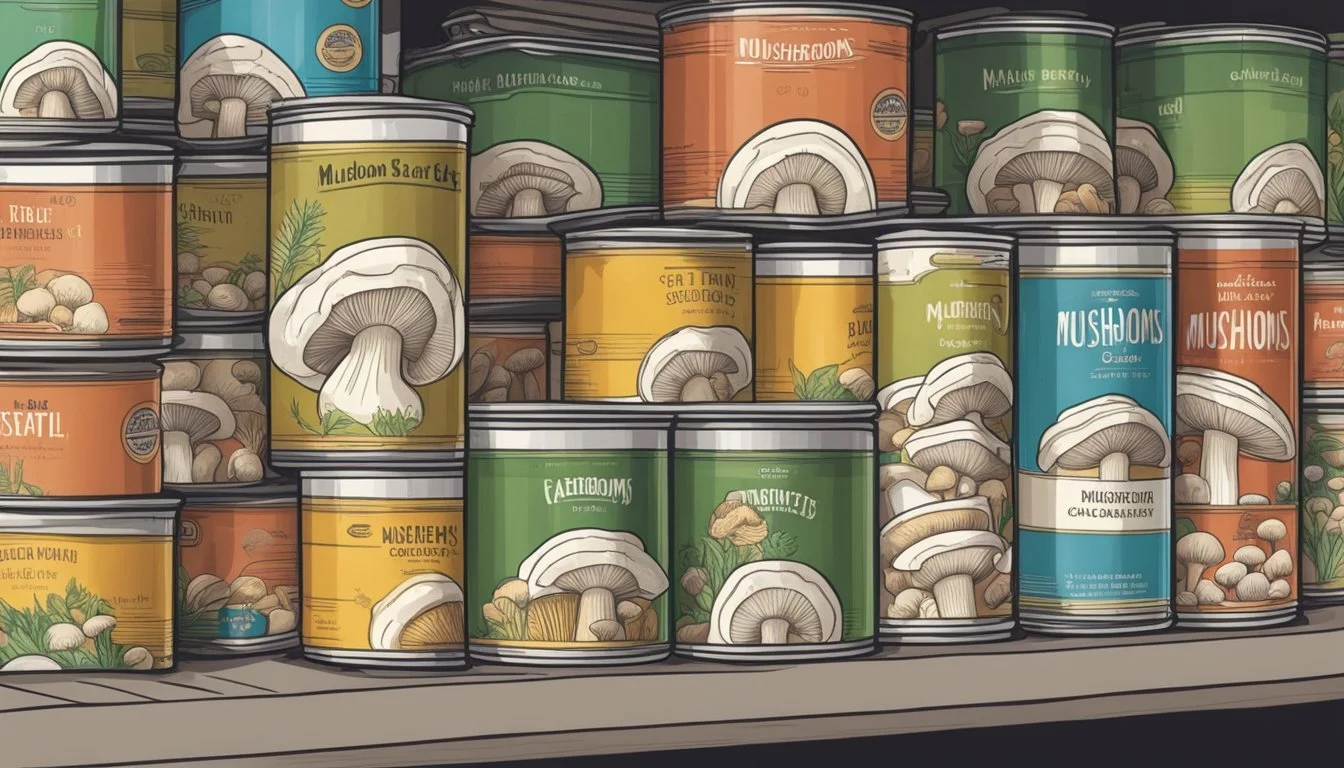Do Canned Mushrooms Expire?
Shelf Life and Storage Tips
Canned mushrooms are a convenient pantry staple, but many wonder about their expiration. While canned mushrooms can last well beyond their expiration date if stored correctly, it is essential to check the can’s integrity. Storing them in a cool, dry place, away from sunlight, can help maintain their quality.
Unopened canned mushrooms can remain safe for a year or more past their expiration date. Once opened, they should be transferred to an airtight container and refrigerated, where they will last for about 3 to 4 days. Proper storage methods play a crucial role in extending their shelf life.
Understanding the factors that affect the shelf life of canned mushrooms ensures they stay fresh and safe to consume. Monitoring storage conditions and inspecting the cans regularly will help in making the best use of this versatile ingredient.
Understanding Canned Mushrooms
Canned mushrooms offer a convenient and long-lasting alternative to fresh mushrooms. This section explores the basics of canned mushrooms and the different varieties available.
The Basics of Canned Mushrooms
Shelf life is a notable advantage of canned mushrooms. These preserved fungi are typically safe to consume even beyond their expiration date if the can remains intact and is stored in a cool, dry place. However, once opened, canned mushrooms should be transferred to an airtight container and refrigerated to retain their quality for 5-7 days.
Canning mushrooms also impacts their nutritional value. While they retain many essential vitamins and minerals, such as B vitamins and selenium, be aware of their sodium content, which can be elevated due to the preservation process. Always check the label for specific nutritional information.
Canned mushrooms can come as either whole or sliced mushrooms. Whole mushrooms offer a more versatile option for various recipes, whereas sliced mushrooms can require less preparation time. Both bring similar nutritional benefits but may differ slightly in texture.
Types and Varieties
Aside from standard canned mushrooms, consumers can also find bottled mushrooms, which often undergo the same preservation method. These can differ in flavor due to the liquid they're packed in, such as brine or oil.
Comparing canned mushrooms to alternatives like fresh mushrooms, dried mushrooms, or frozen mushrooms reveals distinct qualities. Fresh mushrooms excel in taste and texture but have a shorter shelf life. Dried mushrooms, on the other hand, offer long-term storage and intense flavors but need rehydration.
The selection of canned mushrooms typically includes common varieties like white button mushrooms, cremini, and portobello. This range provides ample options to match different culinary needs and preferences. Each type brings unique flavors and textures, making canned mushrooms a versatile pantry staple.
Identifying Quality and Freshness
When examining canned mushrooms, it is crucial to assess their overall quality and identify any potential signs of spoilage to ensure they are safe to consume. Key factors include observing texture, smell, and appearance.
Signs of Freshness
Fresh canned mushrooms should have a firm texture and consistent, light coloring. The liquid or brine should be clear and free from any sediment or cloudiness. The expiration date on the can often ensures peak quality, though mushrooms can sometimes remain good past this date if stored properly.
Look for:
Firm texture
Clear liquid
Consistent appearance
Detecting Spoilage
To detect spoilage, check for any off odors, which might indicate bacterial growth. A slimy texture or visible mold is a clear sign that the mushrooms are no longer safe to consume. Additionally, dark spots, rusting, bulging, or leaking cans also suggest spoilage.
Signs of spoilage include:
Off odor
Slimy texture
Dark spots
Rusting or bulging cans
Safe Storage Practices
Proper storage of canned mushrooms ensures both their quality and safety for consumption. These practices help prevent spoilage and extend the mushrooms' shelf life. Key points include keeping them in an appropriate storage environment and employing methods to maintain their freshness.
Optimal Storage Conditions
Canned mushrooms should be stored in a cool, dry place such as a pantry or cupboard. The ideal temperature range for storage is between 50°F and 70°F. Avoid direct sunlight and areas with high humidity, as moisture can compromise the can’s integrity, leading to rust or contamination.
Inspect cans regularly for signs of damage. Dented, swollen, or rusted cans should be discarded immediately. For opened cans, the mushrooms should be transferred to an airtight container and stored in the fridge. The refrigerator temperature should be set at or below 40°F to inhibit bacterial growth.
Extending Shelf Life
To extend the shelf life of canned mushrooms beyond their printed expiration date, keep them unopened and in optimal conditions. Once opened, it’s crucial to refrigerate the mushrooms in airtight containers within two hours of opening the can.
Freezing is another method to extend the life of opened canned mushrooms. Transfer them to a freezer-safe, airtight container, and keep them at 0°F or lower. Frozen mushrooms maintain best quality for about 2 months but can remain safe indefinitely if kept continuously frozen.
Additionally, pickling or drying mushrooms are viable alternatives for long-term storage. Both methods can significantly prolong their usability while maintaining safety and quality. Proper thawing in the fridge is advised if you choose to freeze mushrooms to maintain texture and flavor.
Using Canned Mushrooms in Cooking
Canned mushrooms offer a convenient and versatile ingredient for various dishes. They can be incorporated into meals with minimal preparation, enhancing flavors in everything from soups to stir-fries.
Preparation Tips Before Use
Before using canned mushrooms, inspect the can for damage such as dents, swelling, or rust. These are signs the contents may be compromised. Once confirmed safe, open the can and drain the liquid. Rinse the mushrooms under cold water to remove any preservatives and excess salt.
If the recipe requires sliced or smaller pieces, chop the mushrooms accordingly. Transition the mushrooms to a clean bowl. If you plan to freeze leftovers, consider placing them in airtight containers or freezer bags to maintain quality.
Integration Into Recipes
Canned mushrooms can seamlessly blend into a multitude of recipes. For instance, in soups and stews, they add depth and an earthy flavor. When making a risotto, stir in the mushrooms to complement the creamy consistency. For a stir-fry, simply toss them in during the final cooking stages.
In casseroles, combine them with other ingredients to enhance the dish. Pasta dishes benefit from their texture, and pizza gets a flavor boost when topped with sautéed canned mushrooms. Even salads can benefit from the inclusion of these mushrooms, providing an unexpected twist.
Use these mushrooms in cooked dishes to elevate flavors, making them a pantry staple for quick meals.
Nutritional Considerations
Canned mushrooms are a versatile food item that can be a valuable part of a balanced diet. They offer various vitamins and minerals, though there are some differences when compared to fresh mushrooms.
Health Benefits
Canned mushrooms provide several essential nutrients. They are a good source of B vitamins, particularly vitamin B6, which aids in brain function and the creation of red blood cells. Another benefit is their potassium content, which could help in managing blood pressure levels.
Additionally, canned mushrooms contain selenium, an antioxidant that supports the immune system and may reduce inflammation. Vitamin D is another nutrient found in mushrooms, contributing to bone health and immune support.
These nutritional benefits make canned mushrooms a valuable addition to meals, especially when fresh options may not be available.
Comparing Fresh vs. Canned
There are some differences in the nutritional value between fresh and canned mushrooms. Fresh mushrooms generally contain higher levels of some nutrients, including vitamin C and certain antioxidants. Canned mushrooms may lose some nutrients due to the high-heat processing involved in canning.
However, canned mushrooms are conveniently available year-round and tend to be more cost-effective. Both fresh and canned mushrooms can be part of a healthy diet, but the choice may depend on availability, cost, and personal preference.
In conclusion, while fresh mushrooms might offer a slight edge in terms of nutrient retention, canned mushrooms still provide substantial health benefits that can contribute positively to a well-rounded diet.
Frequently Asked Questions
Understanding how to properly store and handle canned mushrooms is essential for maintaining their quality and safety. Below, you can find detailed answers to common questions about freezing and shelf life.
Can You Freeze Canned Mushrooms?
Yes, you can freeze canned mushrooms to extend their shelf life. Properly stored in airtight containers or freezer bags, they can maintain the best quality for about 2 months. Although they remain safe beyond that time if kept constantly frozen at 0°F, their texture and flavor might change.
To freeze them, drain and rinse the mushrooms to remove any excess liquid and place them in freezer-safe containers. Label the containers with the date to keep track of their storage time. This method helps prevent freezer burn and ensures the mushrooms remain as fresh as possible for an extended period.
How Long Do Canned Mushrooms Last?
Unopened canned mushrooms have a significant shelf life and can last well beyond their expiration date, often for a year or more, if stored in cool, dry conditions away from direct sunlight. Storage conditions play a crucial role in maintaining their quality. A pantry, cupboard, or kitchen shelf are ideal places.
Once opened, canned mushrooms should be transferred to a clean, airtight container and refrigerated. They generally last 5-7 days in the refrigerator. Avoid storing opened mushrooms in the original can to prevent a metallic taste. Proper storage ensures safety and maintains the best quality of the mushrooms.





